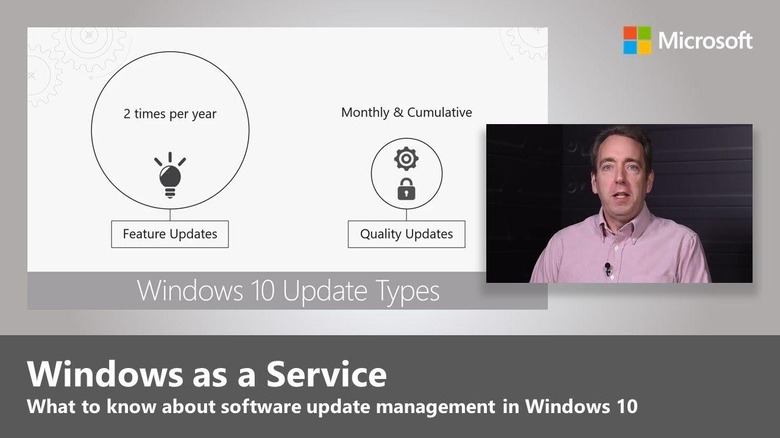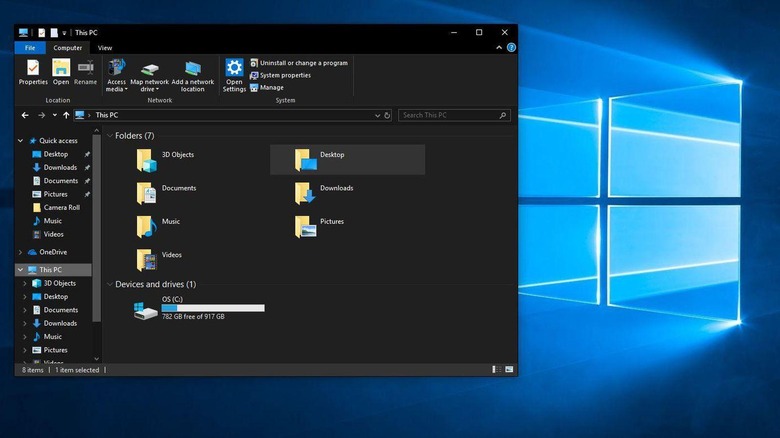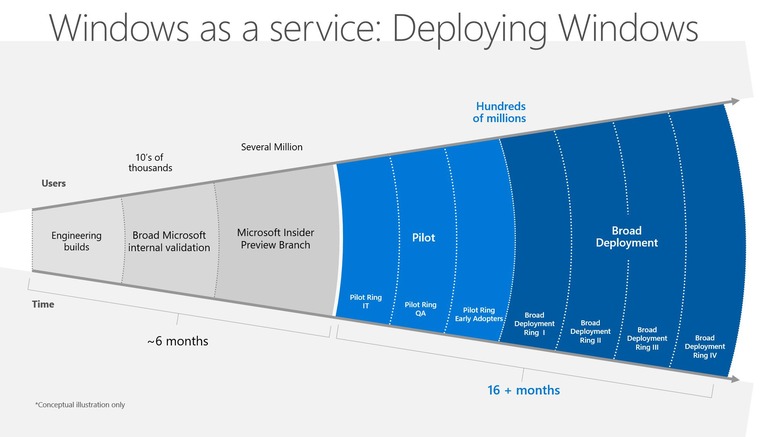Microsoft Needs To Clean Up Its Windows Update Act ASAP
Almost everyone has a smartphone these days,perhaps more than a PC. That means almost everyone uses Android or iOS. Linux runs the tech world behind the scenes and macOS still enjoys the prestige of being the creatives' OS. But like it or not, Windows is still the operating system on computers, from desktops to laptops to hybrids to even some PoS and ATMs, regrettably. With that many users and installs, you'd think Microsoft would exercise great care and caution to ensure its updates don't break computers terribly. Unfortunately, as it turns out, that isn't the case lately.
Windows as a Service
Microsoft has long been regarded as the dinosaur of the computing market. Large and slow-moving, the company's major product, Windows, was regarded to be on the verge of irrelevance and extinction. That, however, was too dramatic and too idyllic a prediction. Microsoft's, especially Windows', downfall would sadly cripple a large portion of the world's computer-dependent systems and institutions. There are quite a number of alternatives to Windows, of course, but it would be an undertaking of epic proportions to replace the behemoth of an operating system.

Fortunately (or not), Microsoft made a U-turn and reinvented itself to be more modern, more hip, and even more welcoming of open source. It wanted to project an image of being agile and a critical component of that change is in presenting Windows as a Service. In a nutshell, it just meant that Windows 10, its current and supposedly "last" version, would get and roll out updates sooner, twice a year in fact, instead of the three years or so in between each major version. In theory, it would allow Microsoft to deliver features and bug fixes sooner. In practice, it did but it also brought crippling bugs faster as well.
Secret changes, disappearing files, broken computers
No Windows 10 update has been without some major problem. At first, they were more scandalous than technically dangerous. Microsoft once changed privacy settings behind users' backs, causing not just an uproar but also some investigations. On the up side, it did force Microsoft to be more transparent about its privacy settings.
The worst so far was the latest October 2018 update, version 1809. Even after months of development, Microsoft managed to release an update that, in no time flat, caused users' files to disappear for no immediately known reason. Microsoft finally traced it to a OneDrive bug and was able to restore some users' files. The damage, however, has already been done.

Redmond re-released the October update, promising to be more transparent with its update process and bugfixes. That, however, brought to light just how broken that update process is. It also partially explains why some users don't get updates at the same time as others. Windows 10 version 1809 is running into a lot of compatibility problems and bugs with hardware that has been around for years and, in one instance, may have been deprecated by the hardware maker itself. Hardware that you'd expect would just continue working throughout the lifecycle of Windows 10. But if there's one thing the new Windows as a Service has proved, it's to expect the unexpected.
Faster processes, slower minds
Because of the almost atrocious track record of these more frequent Windows updates, some have called on Microsoft to slow things down. Ironically, those same people probably wished Microsoft rolled out Windows updates faster years ago. They're not asking much, really, maybe just one major Windows feature update per year instead of two. While that could improve the situation, it's mistaking the symptom for the cause.
A lot of software companies are able to handle bi-annual releases, though Windows is admittedly bigger and more complex than those. Apple does release a new macOS version every year but it has been doing that for years now. Windows 10 is just three years old and that's how long Microsoft has been doing this new development cycle. And while it has adopted a faster update cadence, it failed to update the most critical component of software development: their minds.
Despite its more agile release cycles, Microsoft reportedly still adheres to less agile software development processes and mentality. It's like forcing fast running water through an aging pipe. Something's bound to break and burst. Unfortunately, it's the users that suffer the most. Microsoft may take a hit with its reputation, but users can lose files and computers for good.

Microsoft as a Service Provider
Microsoft is representing itself as many things but it has so far failed to actually adopt the mindsets, philosophies, and practices that need to go along with that shift. With Windows as a Service and its cloud-focused business strategies, Microsoft is turning itself into more than just a software developer. It also needs to transform into a service provider, and no service provider would stay in business for long if it's a slow and bumbling as Microsoft in responding to change.
More than faster iterations, Microsoft needs to use a software development strategy that doesn't simply cram the same steps in shorter time periods. The software world is overflowing with agile methodologies, some of them ironically being evangelized by Microsoft employees. It has so far been doing well in quickly fixing bugs but it would be even better if it actually caught those bugs in development in the first place. Especially ones that are easily encountered by users.
It also needs to stop belittling the effect of serious bugs based on the percentage of users that are affected. Windows has billions of users and even 1% of 1,000,000 is already 10,000 people losing their files. Given the huge responsibility on their shoulders, they really can't afford to overlook bug reports simply because they look almost similar. Especially file-deleting bugs.
Wrap-up
Is Microsoft really doomed no matter how it tries to reshape Windows for the modern times? Maybe, but it would be a slow and painful death. And it is one that will rock the computing industry to its core. There's still nothing that can fully replace Windows, but the alternatives are maturing fast. More and more people are able to do their work on iOS and, to some extent, Android. App developers are moving core experiences to the Web. That's not counting the thousands of people who don't even use Windows because they're on macOS or Linux. Windows might still have the advantage when it comes to numbers but unless Microsoft gets its act together fast, those numbers aren't going to last long.
